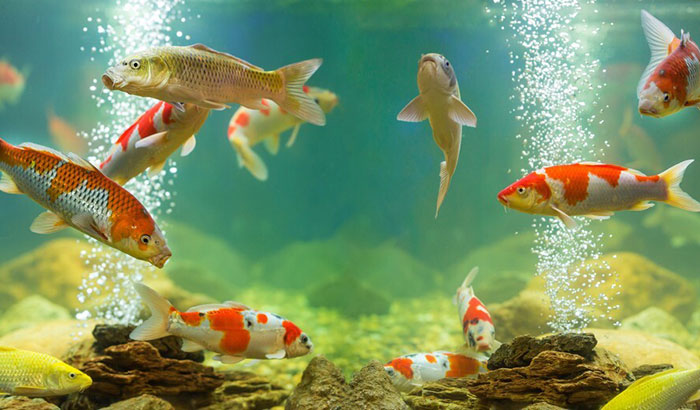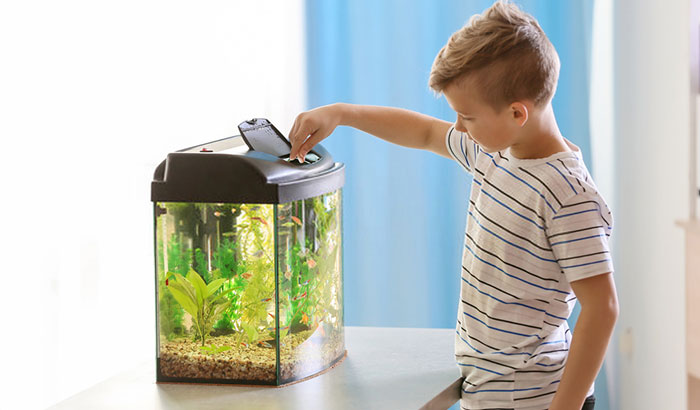Having an aquarium in your home can be fun and also brings substantial benefits to anyone. But it also comes with a lot of challenges, particularly in the maintenance of the fish tank. In fact, many things need to be done to maintain water quality and keep the fish alive. One of which is lowering the ammonia levels to keep it at safe levels and prevent it from being toxic.
But how to lower ammonia levels in fish tank naturally? There are things that you can do naturally to keep the ammonia levels of the fish tank very low. For sure, you can add some chemicals such as pH adjusters and natural drops but what we are focusing on is the natural way of keeping the ammonia levels down. The natural way is all about changing some of our maintenance routines to help in keeping the ammonia at a safe level.
Contents
How to Get Ammonia Levels Down in Fish Tank
If you are still new to fish tank maintenance, please note that ammonia is an essential biological aspect of the overall aquatic system. Meaning, ammonia can severely affect the fish of your tank if not appropriately maintained. But, there are always steps that you can do naturally to help the ammonia levels are relatively safe for your fish. Please check out below:
Partially Change the Fish Tank Water
The first and one of the easiest ways that you can do to lower ammonia levels is to change the water of the fish tank partially. By how much percentage? I say that 30% is enough, which means if you own a 10-gallon tank, you can replace 3 gallons of water for this particular task. Depending on the tank’s condition, you can partially change the water once a week or even more.
When changing the water, you do not need to remove the fish from the tank. Just be careful in doing so because you might unintentionally frighten them when removing the water. I also suggest removing any algae you see during the water removal. You can also use a siphon tube when draining 30% of the water from the fish tank.
Vacuuming Your Gravel
The gravel of your fish tank is an integral part of your aquarium, but it can also be a place where ammonia will be formulated. In fact, those fish waste and fish foods that are not eaten can accumulate in the gravel, which can help produce ammonia. So, you will need to clean it regularly by vacuuming it to prevent the ammonia from formulating inside the fish tank.
Remove Unnecessary Organic Matter
Apart from cleaning the gravel, you can also remove other organic matters that can contribute to ammonia formulation. I have mentioned that fish waste and uneaten foods need to be clean and removed immediately from the tank. Dead fish and dead plants, if not removed immediately, can also contribute to raising the ammonia levels. Meaning, it should be removed immediately to prevent the release of large concentrations of ammonia.
You can use a fish net to scoop out any organic matter you feel should not be in the fish tank to help keep the ammonia levels at a lower level. Another thing that you can do is cleaning the filter in your tank because doing this action will help in reintroducing the building up of organic matter to the fish tank.
Cutting Down the Fish Feeding
If you find uneaten foods in your fish tank, it means that you are giving too many foods that the fish can take. Remember that uneaten food is one of the sources of ammonia, which means you can reduce the amount of food you give to the fish. Doing this action will eliminate all foods that are not eaten and will subsequently reduce opportunities for the ammonia levels to rise.
However, you need to ensure that your fish are getting enough food even though you have already reduced it. You can ask fish experts, possibly a veterinarian, who will give you the idea of the right amount of food you can provide. Reducing the amount of food given can prevent increasing ammonia levels in the future after you clean the fish tank.
Increasing the Aeration of Water
If you’re not familiar, the NH3, a type of toxic ammonia, is a dissolved gas that spreads throughout the water. Increasing the aeration of the water inside your fish tank might help spread the ammonia out of the water and evaporate into thin air. But how will you do it? You can use an aeration pump bit in doing this process; please leave the fish tank uncovered for the ammonia gasses to evaporate quickly and travel outside the fish tank.
Introduced Healthy Bacteria
Another way to reduce ammonia concentration in your fish tank’s water is to introduce healthy back\teria into the water. This bacteria will usually line in the fish tank’s bottom to assist in converting the ammonia into a more good bacteria, specifically its nitrogen components. But how will you do it?
This action can be done by putting one or even two affordable fish in the tank so that their waste can quickly bring the bacteria. Another way is to put a handful of gravel coming from an older fish tank and should be put on the bottom of the tank.
Avoid Overstocking the Fish Tank
The problem when your fish tank is new, you tend to be excited by putting so many fish into the fish tank. The problem with too many fish is that the good bacteria in the fish tank cannot establish themselves and will not be able to keep up with the huge amount of waste produce by the fish.
Conclusion
But how to lower ammonia levels in fish tank naturally? There are several ways to do as stated above. These steps are easy to do and do not need any chemicals to do. Eventually, you can use chemicals to control other factors such as the pH level and adding neutralizing drops. Overall, lowering ammonia levels comes in different steps that can be done correctly and bring healthy water to the fish.


